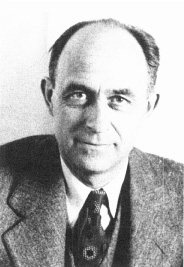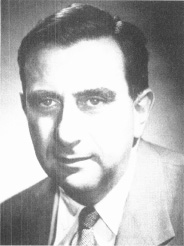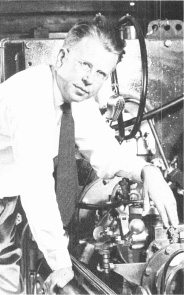Pandora's Keepers (26 page)
Authors: Brian Van DeMark

Ethical and moral concerns had been eclipsed by their emotional and psychological investment and the intensity they brought
to problem solving. The physics existed; it simply waited to be revealed. They believed the bomb was going to be built by
someone, and they wanted it to be them. The intensity of collaborative work with extraordinarily gifted people also had enormous
appeal. That camaraderie, shared in the exploration of an arcane and forbidden realm, provided a rare sense of intimacy, a
sense of transcendence that combined strong creative satisfaction with feelings of individual power—how many people could
resist that? And like most Americans in 1945, they found it hard to empathize with the fate of a people whose soldiers had
committed atrocities against Americans and who were so physically and culturally different. There was not a single Asian American
among the Manhattan Project staff, and it was easy for the scientists to think of the Japanese as “the other.” There was some
private debate about the morality of dropping the bomb on a city, but most felt it was no worse than the fire raids then devastating
Japan and that it was justified if it ended the war. In addition, most scientists believed—or wanted to believe—that once
this horrible weapon was used, there could never be another war. This made the idea of using the bomb to kill large numbers
of civilians emotionally easier for those who were building it.
Szilard was determined to do all he could to prevent this. On May twenty-eighth, he and two fellow scientists that he persuaded
to come along traveled to South Carolina to see James Byrnes, who was now secretary of state designate. Szilard was directed
there by the president’s appointments secretary after an unsuccessful attempt to speak personally with Truman. Szilard and
his two companions traveled by train to Spartanburg, a small town nestled in the piney foothills of western South Carolina,
and walked from the red brick railroad station to Byrnes’s house nearby.
The meeting between Szilard and Byrnes echoed the one between Bohr and Churchill the year before. It was a tense, unsatisfactory
exchange between different men with different assumptions and perspectives. A purse-lipped man with a wiry frame, beaklike
nose, and sharp eyes that peered at others with steely geniality, Byrnes was a savvy politician thoroughly schooled in the
practicalities of power. He had grown up in the 1880s, when the southern up-country still had a tough frontier ethos. Byrnes
was brought up to believe that when you fought, you fought with everything you had. He had little patience, or sympathy, for
the moral arguments of a physicist with a foreign accent, though he concealed his lack of interest beneath the mask of amiability
that politicians always have on call.
22
Szilard gave the secretary of state designate a copy of the memo he had prepared for Roosevelt shortly before the president’s
death. Even before Byrnes got halfway through the memo, Szilard started to warn him against dropping the bomb on Japan as
a way to impress Russia. Byrnes replied that demonstrating the bomb would make Russia more manageable in Europe. “You come
from Hungary,” he said—“you would not want Russia to stay in Hungary indefinitely.”
23
But Szilard did not share Byrnes’s assumption that the bomb would make Russia more manageable and he countered that the “interests
of peace might best be served and an arms race avoided by not using the bomb against Japan, keeping it secret, and letting
the Russians think that our work on it had not succeeded.”
24
Byrnes was appalled and incredulous. The nation had spent more than $2 billion on the bomb’s development, he said—Congress
would demand to see results. As he had told FDR shortly before the president’s death, the administration might well avoid
embarrassment during the war if the bomb remained in doubt, but afterward, “If the project proves a failure, it will then
be subjected to relentless investigation and criticism.”
25
Szilard left Spartanburg acutely frustrated. How could he communicate with politicians insensitive to the bomb’s revolutionary
power and implications? “I thought to myself,” he later wrote, “how much better off the world might be had I been born in
America and become influential in American politics, and had Byrnes been born in Hungary and studied physics. In all probability
there would have been no atomic bomb, and no danger of an arms race between America and Russia.” Szilard was convinced that
Byrnes, and by implication President Truman, were inclined toward a shortsighted policy that would make a postwar atomic arms
race inevitable.
26
On the way back to Chicago, Szilard stopped in Washington to see Oppenheimer, who was in the capital for an upcoming meeting
of the Interim Committee. Szilard told Oppenheimer about his unsuccessful meeting with Byrnes and stressed how important it
was to persuade policy makers to inform the Russians about the bomb before it was used against Japan. “Don’t you think if
we tell the Russians what we intend to do and then use the bomb in Japan, the Russians will understand it?” Oppenheimer asked.
“They’ll understand it only too well,” Szilard answered.
27
Three days after the Spartanburg meeting, on May 31, 1945, the Interim Committee and its Scientific Advisory Panel met in
Stimson’s Pentagon office to work out a recommendation for President Truman on the use of the atomic bomb. Nazi Germany had
surrendered only three weeks earlier. Fighting for Okinawa had entered its bloodiest phase. Japan’s militarists seemed unwavering
in their determination to fight to the finish. It would be another seven weeks before the first atomic bomb would be tested.
In preparation for the meeting, Arthur Compton drafted a memorandum for the other participants. In it, he stressed that the
use of the atomic bomb on Japan was “more a political than a military question because it introduces the question of mass
slaughter, really for the first time in history. Essentially, the question of the use to be made of the new weapon carries
much more serious implications than the introduction of poison gas.” He called the question of the bomb’s use “first in point
of urgency.” “This whole question,” Compton wrote skeptically, “may well have received the broad study it demands. I merely
mention it as one of the urgent problems that have bothered our men because of its many ramifications and humanitarian implications.”
28
Those gathered in Stimson’s office that morning shared two unstated assumptions: that the atomic bomb would have a decisive
impact on Japan’s leaders; and that the American public, if they knew of its existence, would demand that it be used to save
the lives of American servicemen. The expenditure of billions of dollars; mounting U.S. casualties in the face of tenacious
Japanese resistance; the bomb’s expected salutary effect on postwar relations with the Soviet Union—all these factors bolstered
a predisposition toward use. “Throughout the morning’s discussion,” Compton later wrote, “it seemed to be a foregone conclusion
that the bomb would be used. It was regarding only the details of strategy and tactics that differing views were expressed.”
29
NINE PHYSICISTS

Leo Szilard (1898–1964), Hungarian-born American physicist who helped initiate the Manhattan Project in 1939 yet vigorously
opposed dropping the atomic bomb on Japan’s cities in the summer of 1945. After the war, he became an ardent promoter of international
control of nuclear weapons. (Bulletin of the Atomic Scientists,
courtesy AIP Emilio Segrè Visual Archives
)

Enrico Fermi (1901–1954), Italian-born American physicist who conducted early neutron experiments and directed the first controlled
nuclear chain reaction in December 1942. He reluctantly supported use of the atomic bomb against Japan and development of
the superbomb after the war. (
AIP Emilio Segrè Visual Archives, Segrè Collection
)

I. I. Rabi (1898–1988), American physicist who consulted at Los Alamos during the war, where he acted as an adviser and consultant
to his close friend, Robert Oppenheimer. He served in many government advisory posts after the war and vigorously defended
Oppenheimer against charges of being a security risk. (©
AP/Wide World Photos
)

Niels Bohr (1885–1962), Danish theoretical physicist whose concern about the terrifying prospects for humanity posed by atomic
weapons led him to lobby British prime minister Winston Churchill and American president Franklin Roosevelt during the war
in favor of international control. He was unsuccessful. (
National Archives and Records Administration, courtesy AIP Emilio Segrè Visual Archives
)

Edward Teller (1908–2003), Hungarian-born American physicist who helped convince the U.S. government to build an atomic bomb
and later pushed for development of the superbomb. A staunch anticommunist, he sought American nuclear superiority over the
Soviet Union during the Cold War. (©
CORBIS
)
